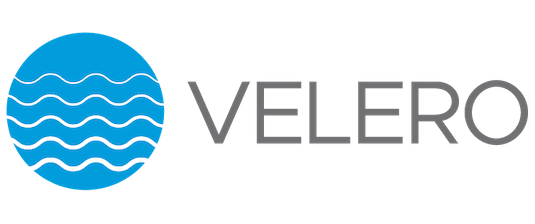* Validate CRDs against latest Kubernetes versions Add Kubernetes v1.19 and v1.20 series images, and consolidate the job into a single file to reduce repetition. Signed-off-by: Nolan Brubaker <brubakern@vmware.com> * Ignore job if the changes are only site/design Signed-off-by: Nolan Brubaker <brubakern@vmware.com> * Fix codespell error Signed-off-by: Nolan Brubaker <brubakern@vmware.com> * Cache Velero binary for reuse on workers This will cache the Velero binary based on the PR number and a SHA256 of the generated binary. This way, the runners testing each version of Kubernetes do not need to build it independently. Signed-off-by: Nolan Brubaker <brubakern@vmware.com> * Fix GitHub event access Signed-off-by: Nolan Brubaker <brubakern@vmware.com> * Wrap output path in quotes Signed-off-by: Nolan Brubaker <brubakern@vmware.com> * Move code checkout to build step Signed-off-by: Nolan Brubaker <brubakern@vmware.com> * Also cache go modules Signed-off-by: Nolan Brubaker <brubakern@vmware.com> * Fix syntax issues Signed-off-by: Nolan Brubaker <brubakern@vmware.com> * Download cached binary on each node Signed-off-by: Nolan Brubaker <brubakern@vmware.com> * Use cached go modules on main CI Signed-off-by: Nolan Brubaker <brubakern@vmware.com> |
||
|---|---|---|
| .github | ||
| changelogs | ||
| cmd | ||
| config | ||
| design | ||
| examples | ||
| hack | ||
| internal | ||
| pkg | ||
| site | ||
| test/e2e | ||
| third_party/kubernetes/pkg/kubectl/cmd | ||
| tilt-resources | ||
| .dockerignore | ||
| .gitignore | ||
| .goreleaser.yml | ||
| ADOPTERS.md | ||
| CHANGELOG.md | ||
| CODE_OF_CONDUCT.md | ||
| CONTRIBUTING.md | ||
| Dockerfile | ||
| GOVERNANCE.md | ||
| LICENSE | ||
| MAINTAINERS.md | ||
| Makefile | ||
| PROJECT | ||
| README.md | ||
| ROADMAP.md | ||
| SECURITY.md | ||
| SUPPORT.md | ||
| Tiltfile | ||
| go.mod | ||
| go.sum | ||
| golangci.yaml | ||
| netlify.toml | ||
| restore-hooks_product-requirements.md | ||
README.md
Overview
Velero (formerly Heptio Ark) gives you tools to back up and restore your Kubernetes cluster resources and persistent volumes. You can run Velero with a public cloud platform or on-premises. Velero lets you:
- Take backups of your cluster and restore in case of loss.
- Migrate cluster resources to other clusters.
- Replicate your production cluster to development and testing clusters.
Velero consists of:
- A server that runs on your cluster
- A command-line client that runs locally
Documentation
The documentation provides a getting started guide and information about building from source, architecture, extending Velero, and more.
Please use the version selector at the top of the site to ensure you are using the appropriate documentation for your version of Velero.
Troubleshooting
If you encounter issues, review the troubleshooting docs, file an issue, or talk to us on the #velero channel on the Kubernetes Slack server.
Contributing
If you are ready to jump in and test, add code, or help with documentation, follow the instructions on our Start contributing documentation for guidance on how to setup Velero for development.
Changelog
See the list of releases to find out about feature changes.
